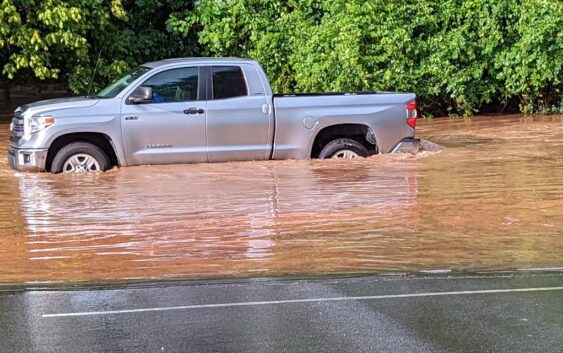- CenterPoint Energy accelerates infrastructure improvements ahead of hurricane season
- Carolina Hurricanes playoff tickets go on sale Thursday
- Ask the Meteorologist: Why do tornadoes target Tornado Alley, Dixie Alley?
- Nonprofit closes distribution site that aided thousands after Hurricane Helene
- Trump approves federal assistance amid Arkansas flooding
Warming climate increases threat of flooding events

A warming climate means more extreme rainfall and flooding events.
CHARLOTTE, N.C. — The Carolinas is seeing more record-setting rainfall rates and more extreme rainfall because of a warming climate.
When the atmosphere warms by just one degree Fahrenheit, it increases its capacity to retain water by 4%.
This past June was the warmest month of June in the 174-year global climate records, according to NOAA. That added warmth increases the chances of excessive rainfall events.
“If you look at extreme rain events, very heavy precipitation events, they really depend on the amount of water vapor and the strength of the updraft, the strength at which the air is rising,” Greg Lackmann, a professor at North Carolina State University, explained. “And those things are actually connected, because one of the things that forces the updraft… is the release of heat by condensing water vapor.”
Cities like Charlotte can be very prone to flash flooding because of their topography and rapid development. With over 3,000 miles of creeks, Mecklenburg County has an extensive network of creeks and streams.
Charlotte-Mecklenburg Storm Water Services is charged with handling all of that water. To build resilience against future flooding events, Char-Meck Storm Water Services is improving its infrastructure.
John Wendel, a spokesperson for Char-Meck Storm Water Services, said they’re working to increase the capacity of both human-created pipe networks and natural creeks.
“In our creeks, that’s natural infrastructure, that’s Mother Nature’s way of moving water. We’re making those wider,” he said.
In 2022, the county rebuilt a section of Little Sugar Creek to prevent flooding in Charlotte’s Hidden Valley neighborhood.
RELATED: After decades of neighborhood flooding, redesigned creek debuts in Charlotte’s Hidden Valley
The government has also purchased homes originally built in flood-prone areas. As of 2020, the nationally praised buyout program had purchased more than 450 homes in Mecklenburg County. The county has spent $64 million buying those homes.
Almost 6% of land in Mecklenburg County is a regulated floodplain. However, anyone can buy flood insurance to protect their investments against excessive rainfall and other flooding events.
Contact Brad Panovich at bpanovich@wcnc.com or follow him on Facebook, X and Instagram.
WCNC Charlotte’s Weather IQ YouTube channel gives detailed explainers from the WCNC Weather Impact Team meteorologists to help you learn and understand weather, climate and science. Watch previous stories where you can raise your Weather IQ in the YouTube playlist below and subscribe to get updated when new videos are uploaded.